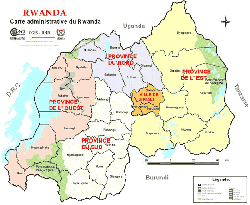N2Africa activities were initially introduced in three provinces, namely Eastern, Northern, and Southern Provinces of Rwanda. In Phase 2, activities were scaled up in Western Province by partners operating there.
 |
BNF technologies promoted by N2Africa in Rwanda were centered around two legume species: common bean (bush and climbing), and soyabean. The policy environment of Rwanda is very favorable to ensure continuity and sustainability of BNF technologies introduced/promoted by N2Africa partners. We can highlight here the crop intensification program (CIP), the input distribution network, especially for mineral fertilizers distribution, and an extension system (Twigire Muhinzi) which is similar to the demonstration plots used by N2Africa and managed by master/lead farmers. |
The main challenge met is the popularization of legume inoculants, which are being produced and distributed by a government institution (Rwanda Agriculture Board- RAB). With the end of N2Africa, the chance that farmers will still have access to inoculants becomes small. There is a crucial need to ensure transition from government institution to private institutions for the production and distribution of legume inoculants at a large scale. The role of the government would be to ensure quality control.
Our recommendation on that would be to develop a proposal for a small project to improve the inoculant distribution network in the country, either with imported brands or the locally produced brand (Rizobiyumu).
The N2Africa Project Rwanda Exit Strategy report is available here.
Speciose Kantengwa, Country Coordinator Rwanda

